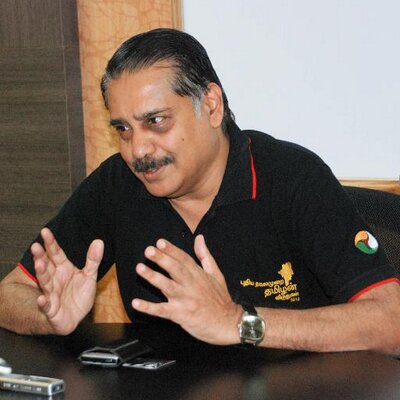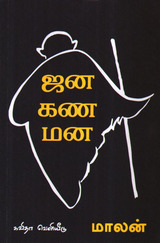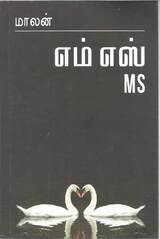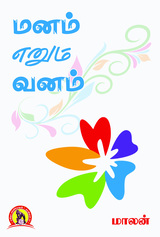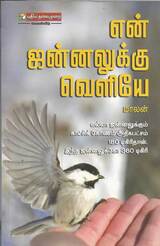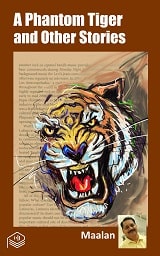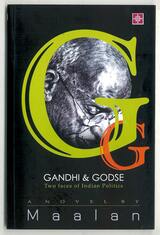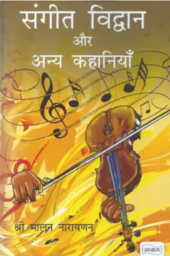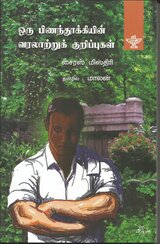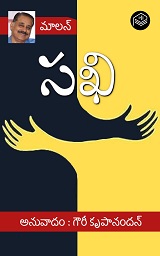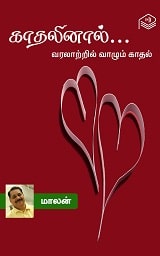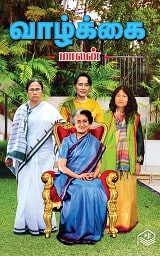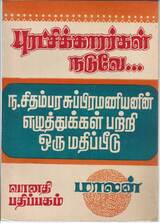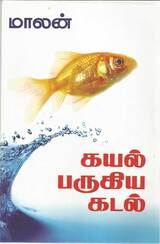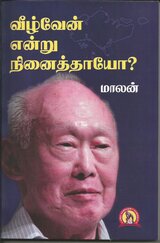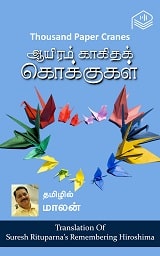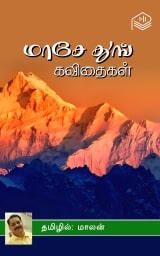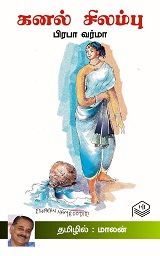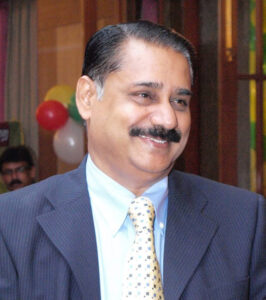Mahabharata, one of the two Indian classics has transcended time, space, languages and art forms. Though there are contentious and hair-splitting arguments basing on astrological, archaeological, epigraphical, historical and textual evidences on the exact date when Mahabharata was retold, hardly there could be any disagreement to the fact that it had transcended many centuries.
It is an epic that has transcended the geographical boundaries It is stated that the diktats of the kings ruled Cambodia, which was called Kambojadeśa, in Sanskrit then, in the early 7th century CE, mandated reading of Mahabharata in the temples 1. Bruce Hathaway a well-known sculptor mentions “ Within Angkor Wat, carved bas-reliefs illustrate scenes from the Ramayana and the Mahabharata—epic poems that are also sacred Hindu texts” 2. Rosa Ellen reported in The Phnom Penh Post in 2013, that Japan’s devastating 2011 tsunami and the subsequent Fukushima nuclear disaster drove Mr Hiroshi Koike a drama director to write and produce three-piece dance drama Mahabharata, India’s great text with dancers from across Asia.3 British director Peter Brook’s critically-acclaimed 1985 stage play is well known. From Theru Koothu to television Mahabharata has charmed many generations.
Mahabharata transcended the languages as well. Hardly there is any Indian language, written or spoken, that doesn’t have at least one version of Mahabharata. Walters Arts Museum, Baltimore, USA, proudly displays a Mughal manuscript –Razmnamah– Persian translation of Mahabharata. A scanned copy of this work is available in British Library London. Commissioned in 1582 by Emperor Akbar, the Persian Razmnāmah is a prose translation of all 18 books of the Sanskrit Mahabharata . It is not a literal translation though the content is relatively unchanged.4. A translation in Malay – Hikayat Perang Pandawa Jaya, (‘the tale of the war of the victorious Pandawa’) is also available in the British Library, London. 5. But this is an abbreviated prose renditions from Old Javanese Bhratayuddha and was composed sometime between late 14th and 16th century.6
In classical language Tamil, the earliest references to Mahabharata traces back to Sangam literature. Like Mahabharata, there are various contentions about the period of Sangam literature, but it has been widely accepted that Sangam period lasted between 300 BCE and 300 CE. Eminent historian Nilakanda Sastri,7 revered Tamil scholar Kamil Veith Zvelebi8l and historian and Professor Dr.Upinder Singh9 of Delhi University have dated Sangam literature before 320 BCE
Sangam literature is a collection of 2381 poems composed in Tamil by 473 poets and these poems are later collected and edited, anthologized and annotated around 10th century CE. When they were compiled they were categorized into two categories, Pathinen Mel Kanakku (Anthology series of major 18 works) and Pathinen keezh kanaku (Anthology series of minor 18 works) roughly based on chronology. Pathinen Mel Kanukau is sub-categorized into Ettu Thogai (The eight anthologies) and Pathu Pattu (the ten idylls)
Dr.A.K.Ramanujan, who spent his life time in teaching at University of Chicago and at other American universities including Harvard and whose academic research ranged across five languages ( English, Kannada, Tamil , Telugu and Sanskrit) has this to say about Sangam literature
“In their antiquity and in their contemporaneity, there is not much else in any Indian literature equal to these quiet and dramatic Tamil poems. In their values and stances, they represent a mature classical poetry: passion is balanced by courtesy, transparency by ironies and nuances of design, impersonality by vivid detail, austerity of line by richness of implication. These poems are not just the earliest evidence of the Tamil genius.”10
This antique works of Tamil genius, Sangam literature makes four kinds of references to Mahabharata. They are
1. Participation of a Tamil king in the Great War.
2 Direct references to the story line of Mahabharata
3. Direct or indirect references to characters of Mahabharata
4. Using scenes or episodes as a similes
Participation of a Tamil king in the Great War.
Pura Nanuru is an anthology of 400 poems which describes bardic and martial poetry. The second song on a Chera king (Chera dynasty ruled the south west coast of the Indian peninsula which is now Kerala) Cheraman Perunchotru Uthiyan Cheralathan by the poet Muranjiyur Mudinaganar, praises him for ‘feeding those hundred men fighting furiously against the five ‘11
அலங்கு உளைப் புரவி ஐவரொடு சினைஇ
நிலந்தலை கொண்ட பொலம் பூந்தும்பை
ஈரைம் பதின்மரும் பொருது களத்து ஒழியப்
பெருஞ்சோற்று மிகுபதம் வரையாது கொடுத்தோய்
If you translate it would read, “Oh, greatness , who gave unlimited rice until those hundred men (wearing golden thumbai flower garlands) had seized the land and perished in the field fighting furiously against the five (whose horses wore swaying plumes)
Learned Tamil scholars, R. Raghava Iyengar, Va. Suba. Manickam and Mylai. Seeni Venkatasamy have given different interpretations to this poem, but have concurred on three points. 1. The term hundred men refers to Kaurava princes 2. The five refers to Pandava princes and 3.The Chera Kings participated in the war.
It may be observed that the Chera king’s name is referred with a prefix “perunchortru”. In Tamil and in Malayalam Choru refers to rice.
This is the only poem written for the king. And this is the only poem written by the poet in the anthology.
Akha Nanuru, another Sangam anthology of 400 poems, also makes a passing reference to Uthiyan, the Chera King who fed the ancestors. The poem (no 233) by Mamoolanar makes a mention of him as முதியர்ப் பேணிய உதியஞ்சேரல் பெருஞ்சோறு கொடுத்த ஞான்றை 12 which means “when King Uthiyancheral fed the ancestors”.
Direct references to the story line of Mahabharata
Another poem Perum Panarrupadai from an Sangam anthology –Pathuppaattu (The ten idylls) also remembers the d great war with vivid details. This is a 500 line long poem sung in praise of Thondaiman Ilanthiraiyan, the ruler of Kanchiipuram . The Panars are bards who played large lutes accompanied by singing. The lines below from that long poem depicts the battle field of Kurushetra
அவ்வாய் வளர்பிறை சூடிச் செவ்வாய்
அந்தி வானத்து ஆடுமழை கடுப்ப
வெண்கோட்டு இரும்பிணம் குருதி ஈர்ப்ப
ஈர் ஐம் பதின்மரும் பொருது களத்து அவிய
பேர் அமர்க் கடந்த கொடுஞ்சி நெடுந்தேர்
ஆராச் செருவின் ஐவர் போல
அடங்காத் தானையோடு உடன்று மேல்வந்த
ஒன்னாத் தெவ்வர் உலைவிடத்து ஆர்த்து
கச்சியோனே கைவண் தோன்றல்
நச்சிச் சென்றோர்க்கு ஏமம் ஆகிய 13
If translated into English it would read as : He is protection to those who seek the charitable scion of Kanji, who routed his enemies in battlefields like the five men owning chariots with decorations, who have won great battles, never lost, who destroyed hundreds, the flood of blood carrying dead bodies of elephants with white tusks, appearing like clouds that roam in the red-coloured, wide sky adorned with a crescent moon.
Direct references to characters of Mahabharata
Sirupanarrupadai is a part of the Sangam anthology Pathupattu ( the ten idylls) composed by poet Nallur Nathathanar . It is a 269 line poem that guides the bards to benevolent kings. While relishing the delicacies of the palace, the poet recalls Bhima, the master of culinary. He presumes the recipes must be from the cookbook of Bhima. The poet goes beyond mentioning Bhima and recounts an episode in Mahabharata
கா எரியூட்டிய கவர் கணைத் தூணிப்
பூ விரி கச்சைப் புகழோன் தன் முன்
பனி வரை மார்பன் பயந்த நுண் பொருள்
பனுவலின் வழாஅப் பல் வேறு அடிசில் 14
Translating this into English it would read: He will serve you many different foods that have been created using a cookbook written by Bhima with a chest like that of the snow-covered Himalayas, elder brother of Arjuna who wears abreast cloth with flower designs, and has a quiver which contains the arrow that he used to burn the Kāndavam forest, at the request of the fire ‘go!’
Krishna and Balaram are described with details of their skin complexions (Krishna was ‘blue as polished sapphire and Balaram was as white as whorled conch) and their flags ( Eagle is for Krishna and Palm tree for Balram) in Purananurau15 by poet Nakeeran. He praises his king Nanmaran by comparing his valour with that of Balaram.
Another poet Kaarikannan also uses a similar expression – Blue Krishna and White Balaram- in Purananuru16 (58) when he praises the Cholan Pandyan Duo Perunthirumavalan and Peru Vazhuthi.
Krishna and Balaram are also referred in Paripadal17, the earliest Bhakti poems that were sung to music
Indirect references
Other than direct references mentioned here, there are indirect references to Draupadi, Bheema and Thuchadan in another Sangam anthology Kalithogai 18 (Mullai kali 101: 18-21)
Using scenes or episodes as a similes
The dramatic episodes Duryodhana’s plot to burn Pandavas alive at the Lakshagraha (The house of lacquer) narrated in the Adi parva of Mahabharata has triggered the imagination of a Sangam poet Paalai Paadiya Perung Kadung Ko and he uses it appropriately in the piece of advice rendered by the friend of the heroine to the hero when he takes leave of her. In the scene set in the landscape of dessert, she warns him of the dangers en route. The poem no 25 in Kalithogai 19 cites the conspiracy at Lakshagraha:
“Sir, if you go on the barren, hot path on the mountain, where the path is surrounded with flame and
smoke, rutting, mighty male elephants are caught in the intense roaring flames from dry bamboo that surround them like the fire of the lacquer house of the five great kings , set by the eldest son of the man whose name is the bright sun in northern language. The handsome elephants with powerful trunks who protect their herds, unite and escape, stepping through fire and smoke creating a path, like the wind god who blew and protected the wax house from fire saving those inside.”
Perundevanar’s Bharatham
Traces of Mahabharata are found in the Sangam literature, suggests the possibility of a wholesome version of Mahabharata in Tamil available in the early period. The compiler of Sangam Anthology, Ettu thogai is known to be Perunthevanar. He is referred to be as ‘Paratham Paadiya’ Perunthevanar (Perundevanar who sung Mahabharata) in the literary texts. Chinnamannur copper plates, one of the epigraphical evidences on Pandya dynasty, mentions that one Raja Singa Pandiyan, established a conclave of Tamil poets and arranged for the translation of Mahabharata into Tamil Another epigraphical evidence, Thiruvalangattu Charters states one another king Arunilai Visakan also arranged for the translation of Mahabharata.
Scholars have dated this first Tamil version of Mahabharata by Paratham Padiya Perundevanar to 3rd Century BCE. Though the complete text is not available, Nachinarkiniyar has quoted Perundevanar in his commentary on Tholkappiyam. M.S.H.Thompson in an article in the Journal of Royal Asiatic Society writes “ Certain citations in the commentary of the learned Nacciṉārkkiṉiyar on sūtras 17 and 21 of Tolkāppiyam have come, may from this early Sangam Pāratam, as they have the true Sangam ring. So thinks M. Rāghava Ayyangar, who has done good work in dating Tamil literature”.20Pundit Gopal Iyer has collected few stanzas, 46 in all from the commentary on Tholkappiyam and has published them 21.
Bharatha Venba
Much later around the middle of 9th Century CE, another Perundevanar compiled Mahabharatha, which is known as Bharatha Venba. Venba is a form of poetry with strict grammar. Though this 9th-century work is called Bharatha Venba it is poetry in the firm metre are irregularly interspersed with connecting prose. In Tamil, we call it as Uraiyidai itta paattudai cheiyul. The poetic passages are in good chaste Tamil but in contrast, the ornate prose is heavily Sanskritised both lexically and syntactically.22
The text of this work too is not available in entirety. It is estimated that the work had 12000 stanzas but only 800 of them are available now. The surviving portions include half of Udyogaparvam, Bhishmaparvam and part of Dhronaparvam (up to the battle of the 13th day )
The evaluation of the literary values of Bharatha Venba is difficult as only a fragment of the work is available today. But various critics have viewed it differently While M. Arunachalam appreciates it for its devotional fervour, dramatic power, and foe ethical didacticism he ridicules it saying “ the whole reminds us today of the Katha kalakshepam form of narrative”23. But perhaps it is intended to be so. Because it is highly probable that Bharatha Venba was recited may with the accompaniment of some musical instruments. It may be remembered that the work was composed during the time of Nandivarman, a King of Pallava dynasty and oral performance of verbal arts were in vogue during that time.
Professor Jesudasan completely dismisses the work saying “ it fails to move”. He is of the opinion “it has not the faintest claim to greatness”. 24
Villi Bharatham
“The greatest and best of Tamil Mahabharata is” according to the distinguished Czech scholar in Indian Literature and Dravidian linguistics Kamil Zveiebil , “ the grand, ambitious, and majestic musical version of Villiputtur Alwar” 25 Villiputurar, a poet hailing from the northern part of Tamilnadu, composed Bharatham ( Mahabharata) at the request of his patron Varapathi Atkondan. Varapathi was a scion ruling a small domain, Vakkapagai. Villi has sung in praise of Varapathi, as a mark of acknowledgement of his support, In four places in Villi Bharatham
Villi is a contemporary of Arunagirinathar whose period is established epigraphically as 14th Century CE
Villi, is believed to have written 6000 stanzas, but what is available in different editions is between 4339 and 4351 stanzas. All the eighteen Parvas of Mahabharata by Vyas is not available in Villi Bharatham. He has composed only 10 Parvas and concludes with the coronation of Yudhishtra after the great war. He had purposely abridged the version and expressed his intention to do so in the preface to his work. While doing so he has also acknowledged that his source as Veda Vyas’s Mahabharata.
இருக்கு ஆதி மறை மொழிந்தோன் இயம்பிய இப்
பெருங்கதையைப் பலரும் கேட்ப
சுருக்காகப் புராண முறை சொல்லுக என்றலின்
இவன் சொல்லலுற்றான் 26
Despite, Villi’s proclaimed intentions, a poet by name Ashtavathanam Aranganatha Kavirayar, in 18th century, four years after Villi, had written the remaining eight parvas with 2477 stanzas to complete it. But that was not received well by scholars.
Though Villi had acknowledged Vyas as his primary source, he has also borrowed from Bala Bharatha of Agastya Pattar. The first six parts of the work are by and large the translation of Bala Bharatha, and later on, divergence takes place. Mu. Goplakrishnamachariyar, who published Villi’s work in 1925, dismisses the averments that entire Villi’s work is a translation of Bala Bharatha and has tabulated the differences between the two works in his preface.27
Many scholars have published Villi Bharatham and the earliest one was from Arumuga Navalar of Sri Lanka, followed by Komalapuram Rajagopal Pillai. Madurai Tamil Sangam, came out with a better edition in 1907 with explanatory notes. Best among the treatises is the work of V.M. Gopalakrishnamacharya in seven volumes
Villi has handled masterly sandam (the rigid rhythmic pattern) in his work, especially in battle scenes
விழுந்த வாளி கண்டு, பின்னும், விசயன் மூரி வில் குனித்து,
அழுந்த வாளி ஒன்று பத்து நூறு வன்பொடு அடைசினான்;
எழுந்த வாளி வாளியால் விலக்க, ஏவி ஆசுகம்,
கழுந்தது ஆக, அவன் எடுத்த கார்முகம் கலக்கினான் 28
In some places, he displays fertile imaginations like Kamban. Tamil has different and specific names for various kinds of lotus. The blue ones are called Neelam and the red ones are called Senkamalam. He plays with this in one of his verses. “Like two buds of lotus sprouting in the lotus two eyes blossomed in the woman’s face. And when she wept, they turned into red lotus”
Interestingly, Villi abridged the 700 slokas of Bhagavat Gita in 6 stanzas yet were able to give the essence of it.
Villi Bhratham has enjoyed great esteem with scholars. Some have criticized that its diction is highly Sanskritised. Professor Jesudasan is highly critical when he says” its intrinsic literary merits are not much” though he admits “ the verses are dignified” and “ that work can hardly be unpoetical”. Kabil zeveiebil strongly disagrees with Professor Jedudasan and writes, “to my mind this criticism is unjust”29
Nalla Pillai
In the first half of 18th century, a Tamil poet by name Nalla Pillai came out with the full rendering of Mahabharata in 15,300 quatrains. His work was far more exhaustive and covered areas not recorded by his distinguished predecessor. He had filled in many details unsaid by Vyasa and Villi
He was a scholar well versed in Tamil, Telugu and Sanskrit. Inspired by Villi’s work he embarked on a project to render whole of Mahabharatha at the age of 21 and succeeded in it.
But this work received mixed opinions from scholars and critics. Some has considered it as “mediocre and pedestrian” 30 But writer Ashokamitran rates it as, “ Nalla Pillai’s Bharatham is still a scholar’s fare but it is a work every Tamilian ought to be proud of” 31
Subramania Bharathi
Another young poet, at the age of 30, wrote Mahabharata in verse, which turned out to be an outstanding work standing in testimony to his versification. That young poet is none other than Mahakavi Subramania Bharathi. Bharathi wrote Panchali sabatham (Vow of Draupadi ) in 1912 when he was in exile at Pondicherry. He didn’t attempted to translate the entire work of Mahabharata but chooses to transcreate his piece basing on the Sahba Parva in 308 verses. His work begins with the description of Hasthinapura portrays the main characters, narrates the dice game and ends with the climax of Draupadi making a vow to wipe out Duryodana and his entire clan. Bharati opts for an unorthodox form of Tamil poetry – Nondi Sinthu- to tell us the story.
Bharathi claims, in his preface, that Vysa is his principal source. But in places his narrative diverge from Vyas and follows Villi and some places are in variance from both. For example, in Vyasa’s work Draupati is brought to the court by Dushasana dragging her by hair through the corridors of the palace. VIlli narrates this scene with a minor variation of Dushasana dragging her through the streets. Bharathi opts to chose the Villi’s version in this scene.
One interesting aspect of Bharathi’s classic is it depicts only one female character, that is Drupati. He has not dealt with any other female characters like Gandhari or Kunti in his work.
Tamil scholars and nationalists like M.P. Sivagnam and P.Jeevandam had written that Bhrathi has symbolized Bharatha Mata in Draupati who is enslaved employing unfair tricks and tactics by those who seized power.
But another critic T.M. Chidambra Ragunathan, one of the recipients of Sahitya Akademi award, disagrees with them. He is of the opinion that it is not just about Bharata Mata, but a voice against oppression in general and atrocities on woman in particular.32
Bharathi wrote his work, in 1912, when the activists of Garam Dal faction of freedom movement were in prison, and the attempts for armed struggle is almost crushed ruthlessly by the colonial government by oppressive strong arm measures. His newspapers were either folded or banned. Bharathi had no other ammunition with him, other than his literary works to keep the flame alive. The historical evidence lend credence to T.M. Chidambara Ragunathan’s arguments. It is also evident from his choice of picking only Sabha Parvam for translation and choosing Nondi Sindhu, a form close to folk lore, as his format.
There are many works of narrating Mahabharata in Tamil prose and among them Rajaji’s Vysar Virundu (Feast of Vyasa) is more popular. Contemporary writers have attempted to interpret Mahabharata in various perspectives in their fiction.
Undoubtedly it is a rich source to draw from for generations and fertile breeding ground for writers. And its story of Mahabharata never ends.
***
References:
1. சே.கிருஷ்ணமாசாரியர், .வை.மு.கோபாலகிருஷ்ணமாசாரியர் [S.Krishnamachariya, V.M.Gopalakrishnamachariya] (p.3) in வில்லிபாரதம் மூலமும் உரையும் [Villi Bharatham Verse and Text]
2 Bruce Hathaway [2008] The Grandeur of Angkor Wat, Smithsonian Magazine, January 2008
3 Rosa Ellen [2013] In the footsteps of a Hindu epic, The Phnom Penh Post, 2013, July11
4 Razmnamah: the Persian Mahabharata Retrieved from http://blogs.bl.uk/asian-and-african/2016/04/razmnamah-the-persian-mahabharata.html
5 The Mahabharata in Malay manuscripts Retrieved from http://blogs.bl.uk/asian-and-african/2015/09/the-mahabharata-in-malay-manuscripts.html
6 ibid
7 K.A Nilakanta Sastry, A History of South India, OUP (1955) p. 105.
8 Kamil Veith Zvelebil, Companion Studies to the History of Tamil Literature, p. 12
9 Upinder Singh, A history of Ancient and early medieval India, Pearson( 2009) p. 79.
10 Quote by Kamil Zvelebil in Tamil Literature, Otto Harrassowitz (1975), p. 115
11 Vaidehi Herbert (ed) Pura Nanuru Konrai (2013) P.26
12 Vaidehi Herbert (ed) Aka Nanuru Konrai 2013)
13. U.V. Swaminatha Iyer (ed) Pathu pattu P.204
14 ibid
15 Vaidehi Herbert (ed) Pura Nanuru Konrai (2013) P.127
16 ibid p.131
17 Vaidehi Herbert (ed) Paripadal Konrai (2014)
18 Vaidehi Herbert (ed) Kalithokai Konrai (2014) P.337
19 ibid P.89
20. M.S.H.Thompsan The Mahabharata in Tamil Journal of Royal Asiatic Society Vol 92 Issue 3-4 (July 1960) P 115-123
21Panditha A. Gopalaiyan (ed) Baradha Venba IITS (1934)
22 Kamil Zvelebil in Companion studies to the history of Tamil Literature, E.J.Brill (1992), P. 68
23 ibid p.69
24 ibid P67
25 Kamil Zvelebil in Tamil Literature, Otto Harrassowitz (1975), p. 144
26 Villibharatam Payiram 23
27. சே.கிருஷ்ணமாசாரியர், .வை.மு.கோபாலகிருஷ்ணமாசாரியர் [S.Krishnamachariya, V.M.Gopalakrishnamachariya] (p.3) in வில்லிபாரதம் மூலமும் உரையும் [Villi Bharatham Verse and Text] P.12-13
28 வில்லிபாரதம் பாடல் 30 பதினான்காம் போர்ச் சருக்கம் துரோணபர்வம் [ Villibhartam Verse #30, Chapter 14, Dhrona parvam]
29 Kamil Zvelebil in Tamil Literature, Otto Harrassowitz (1975), p. 144
30 Kamil Zvelebil in Tamil Literature, Otto Harrassowitz (1975), p. 145
31 Ashokamitran Tamil Classic The Hindu 2008 January 2
32 T.M.C.Ragunathan பாஞ்சலி சபதம் –உறைபொருளும் மறை பொருளும் [Vow of Panchali] Annamali University (1987) P.85
–
-Speech delivered at Jawaharlal Nehru University

